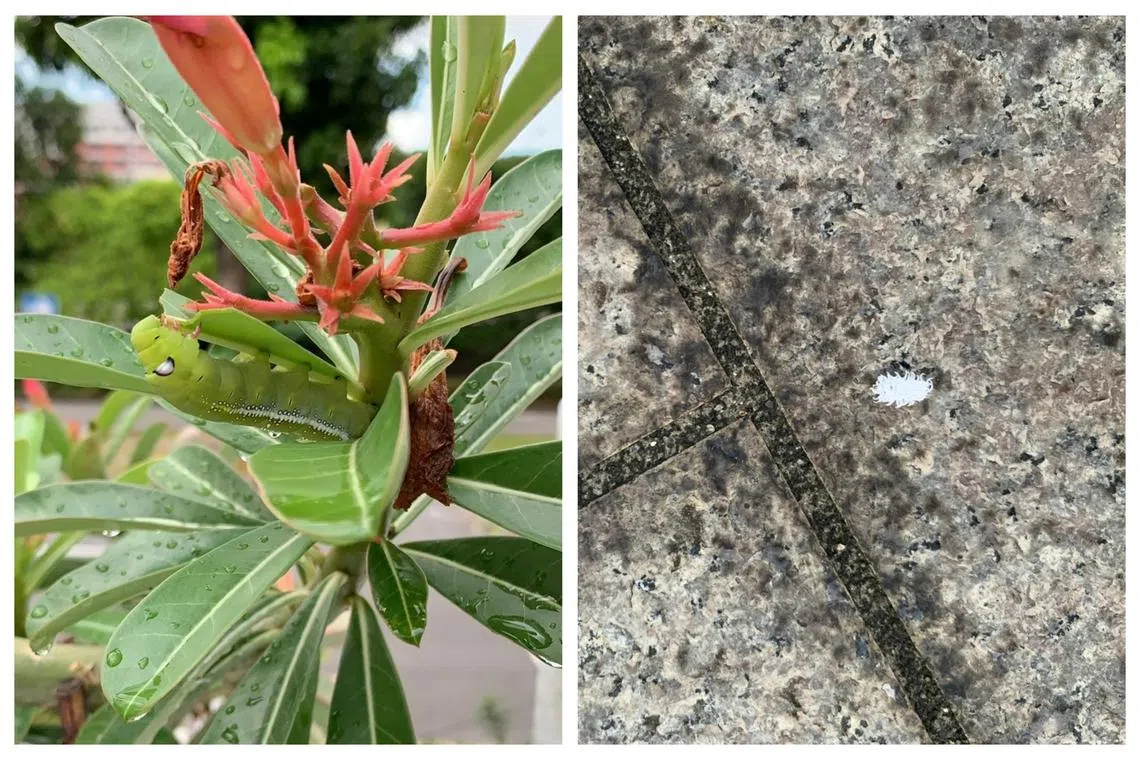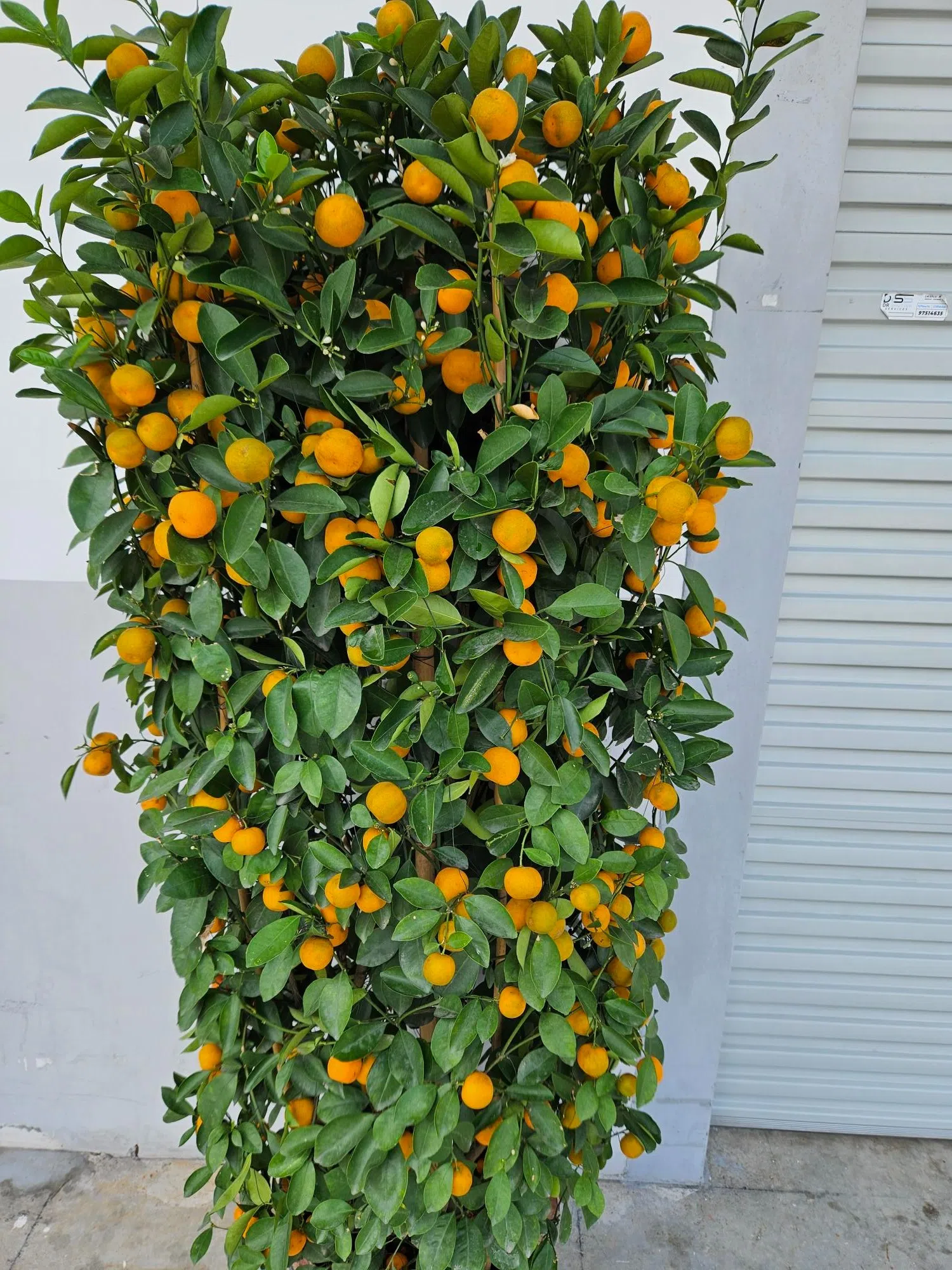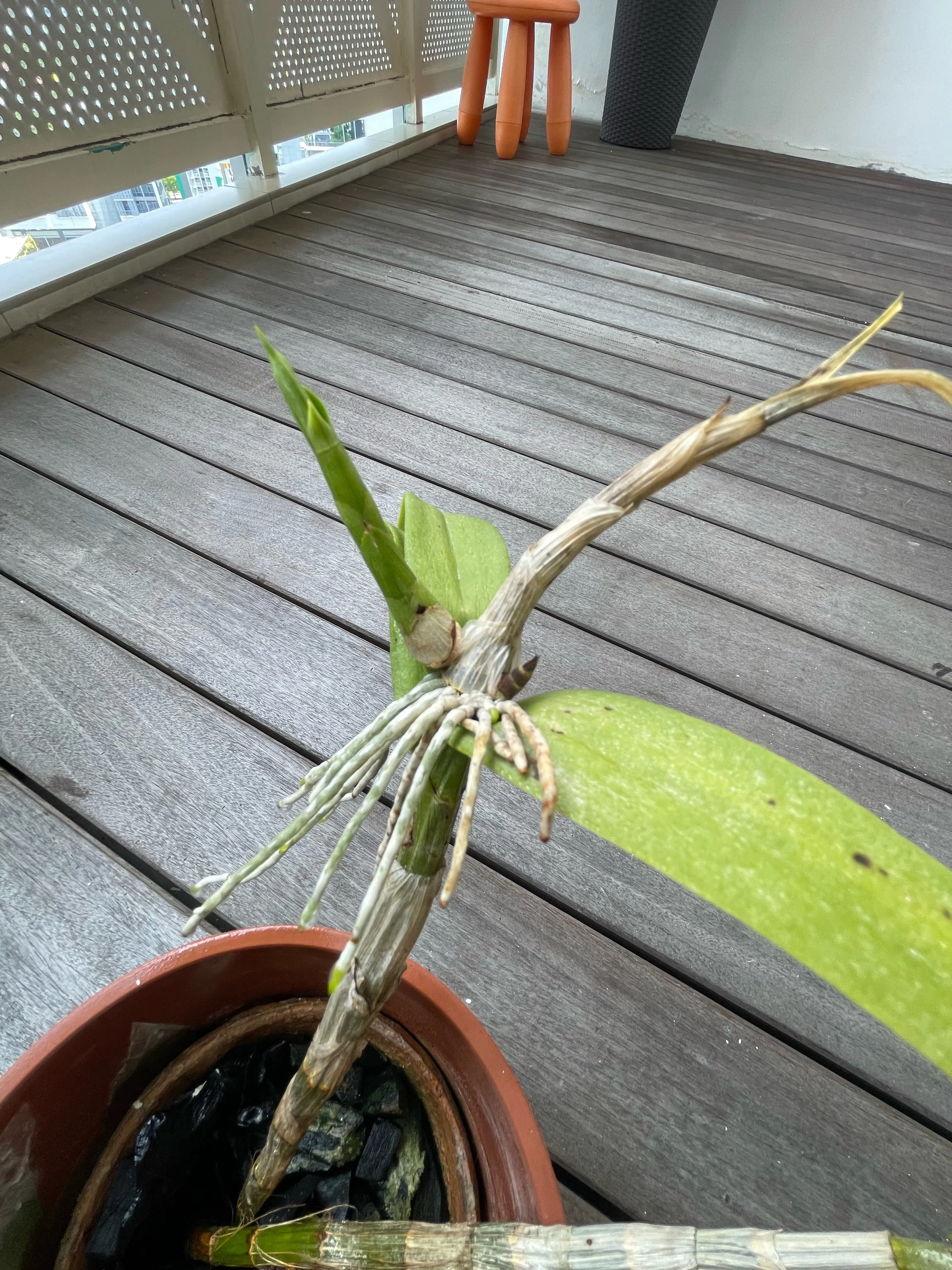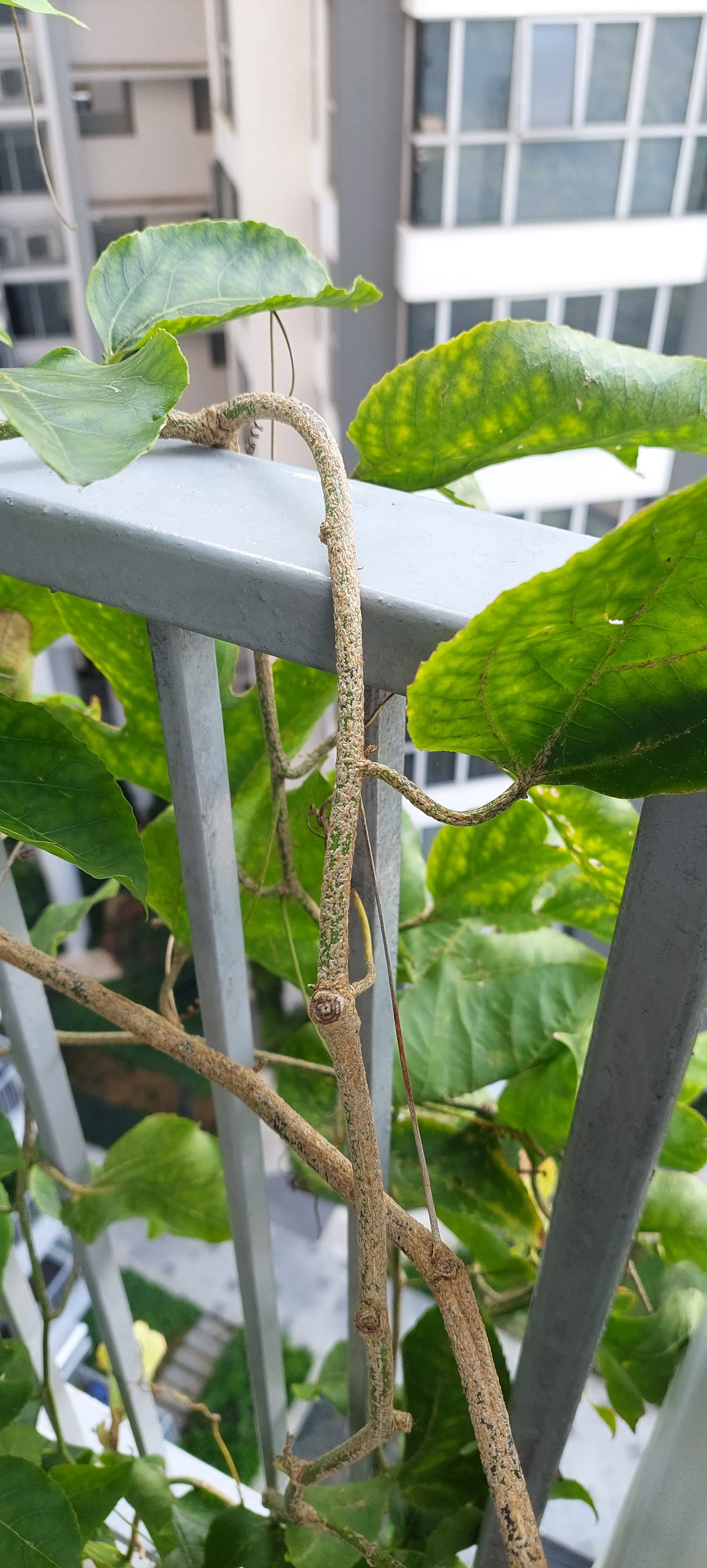Root Awakening: Algae thrives in moist environments
Sign up now: Get ST's newsletters delivered to your inbox

Ludwigia plants grow in wet soil, but this has led to the growth of algae as well.
PHOTOS: ALICE ESPING
Follow topic:
Algae growth is due to poorly draining soil
What is this plant? There is slimy algae growing on the surface of its soil and I am unable to remove it permanently. What is wrong?
Alice Esping
The greenish crust could be algae, which thrives in moist environments created by compacted, poorly draining soil. Try using a fork to break up the soil surface, which will promote proper drainage and quicker drying. If your soil mix is more clay-like, add organic matter like compost.
Your potted plant appears to be a Ludwigia species. There are two local species: the Ludwigia hyssopifolia (Water Primrose) and Ludwigia octovalvis (Primrose Willow). Both produce yellow flowers, grow in wet soil and may appear as weeds in a flower bed or pot.
Desert rose eaten by caterpillar, mealy bug

This desert rose plant is likely to have been infested with the oleander hawk-moth caterpillar (left) and mealy bug (right).
PHOTOS: TAN CHIN NGEE
My desert rose plant was infested with a green worm and, after it was removed, a white insect. What are they and how do I get rid of them?
Tan Chin Ngee
The green worm is likely the oleander hawk-moth caterpillar, which feeds on plants from the frangipani family (Apocynaceae). You can rear it in a tank and feed it with leaves picked from your plant. Once it matures, the adult oleander hawk-moth can be released into the wild.
The white insect may be a mealy bug, a sap-sucking pest which can be washed off using a strong jet of water.
Wash all infested parts of the plant diligently and repeatedly. Alternatively, you can suffocate pests with a low-toxicity pesticide like summer oil, which is available at local nurseries.
Avoid eating fruit from festive plants

The Four Seasons Lime grows well in Singapore and is a popular festive plant.
PHOTO: KOH CHWEE TAU
Are the fruit of my Chinese New Year plant edible?
Koh Chwee Tau
It is best not to eat the fruit of festive citrus plants, as it is not known how each plant is cultivated. Discard the fruit with other household waste.
The Four Seasons Lime can thrive in Singapore. Remove any stakes and supporting structures, and let the plant grow naturally. Ensure it is in a large enough pot with well-draining soil, and grown in a spot that gets plenty of sunlight. Fertilise it regularly.
Check orchid’s root health

The baby plant growing on this orchid’s pseudostem is called a keiki.
PHOTO: IRIN NG
My orchid is growing roots at the top and I do not know how to repot it. Its existing roots and stem look weak. What should I do?
Irin Ng
The baby plant growing on the pseudostem of your orchid is called a keiki. From the picture, the mother plant looks to be in poor health, so the keiki production could be a stress response.
Carefully remove the mother plant from the pot and check if the roots have filled the pot. If they have, it can lead to poor soil drainage and root rot, and the overall decline of the plant.
You may want to open up the root system and remove the dead parts. Pot the plant in a container of fresh charcoal chips and place it in a cool area away from direct sunlight. After two weeks or so, move it to a new spot that gets four to six hours of filtered sunlight a day.
Passion fruit infested with scale insects

Scale insects are sap-sucking pests which can proliferate in large numbers without being noticed.
PHOTO: THAM TUCK KONG
How can I get rid of the brownish growths on my passion fruit plant?
Tham Tuck Kong
The brownish coating on your passion fruit vine could be scale insects, which are sap-sucking pests that appear on perennial plants. They can proliferate in large numbers without being noticed.
Remove as many as you can with a soft toothbrush. Next, thoroughly and regularly apply summer oil – a low-toxicity pesticide available in local nurseries – until the infestation is under control.
Answers by Dr Wilson Wong, an NParks-certified practising horticulturist and parks manager. He is the founder of Green Culture Singapore and an adjunct assistant professor (Food Science & Technology) at the National University of Singapore.
Have a gardening query? E-mail it with clear, high-resolution pictures of at least 1MB, if any, and your full name to . We reserve the right to edit and reject questions.

